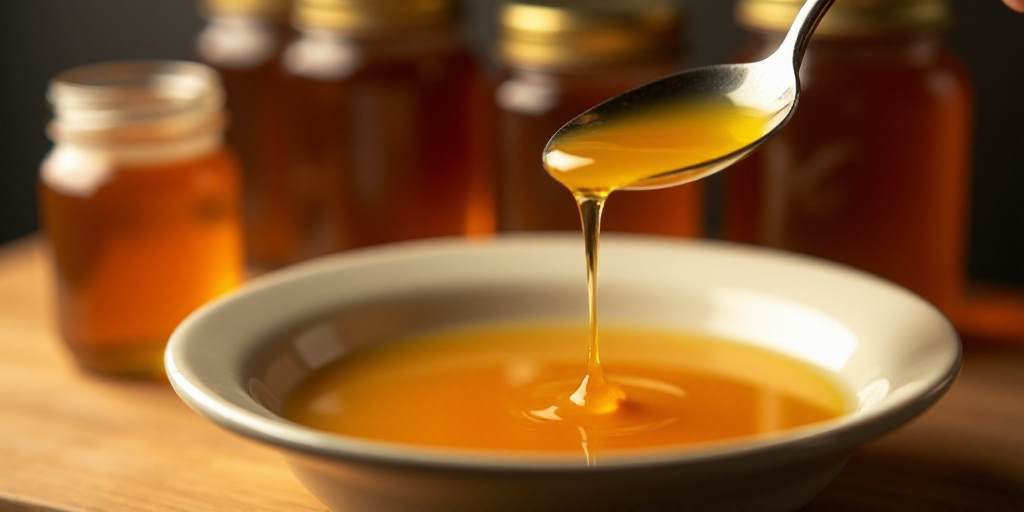Introduction
Buying a spoonful of honey should be an act of trust: floral aroma, complex sweetness, health benefits, and a story that begins with the wings of a bee and ends on our tables. However, in Mexico, this chain has been broken. The honey many of us buy is not real honey; it’s corn syrup, water with sugar, or an imitation. And most people are unaware.
The Adulteration of Honey
Honey adulteration is one of the most silent and normalized food frauds in the country. On supermarket shelves and popular markets, numerous products are advertised as “100% natural” or “purely from bees,” but they have been diluted or directly made with corn syrup, glucose, starch, and other additives that not only deceive consumers but also displace true honey and harm those who produce it ethically.
Price as an Indicator
Producing a kilogram of authentic honey costs between 100 and 200 pesos, depending on the region and flowering. That’s why a real jar sells for between 150 and 300 pesos. If you find it for less than 70 pesos, it’s almost certain that you’re buying a cheap substitute with no properties, origin, or respect for apiculture.
Mexico’s Honey Production
Mexico is a significant honey producer. In 2023, the country produced 58,330 metric tons of honey, placing it as the seventh-largest producer globally, according to data from the Secretariat of Agriculture and Rural Development (SADER). Yucatan leads with 9,451 metric tons annually, but Jalisco generates the highest production value at nearly 300 million pesos.
This honey is exported to discerning markets like the United States, Germany, the UK, Japan, and Switzerland. However, domestic consumers often lack access or awareness to distinguish authentic honey, allowing fakes to be sold unchecked.
Identifying Fake Honey
Detecting fake honey doesn’t require a lab. Simply observe its behavior: genuine honey crystallizes over time, has a dense texture, and an irregular flavor that changes with flowering. It’s not overly sweet or permanently liquid. If dissolved in water, it should sink to the bottom. If it generates foam when mixed with vinegar or changes color with iodine, adulterants are present. If it smells of little, tastes of much, and costs very little, it’s not real honey.
Mexico’s Apicultural Wealth
Mexico boasts immense apicultural wealth. The country’s five honey-producing regions—the Yucatan Peninsula, the Highlands, the Gulf Coast, the Pacific Coast, and the North—offer unique profiles: from tunal in Yucatan to mesquite in the north, from orange blossom in Veracruz to multifloral Pacific varieties. Each jar of authentic honey is a geographical, cultural, and environmental capsule.
Government Support
The government recognizes its value through the “Production for Well-being” program, supporting over 27,000 beekeepers in 2024 with nearly 200 million pesos to promote agroecological practices, improve sanitation, complementary feeding, and responsible colony management.
The Consumer’s Role
However, all this effort can be in vain if consumers ultimately choose based on price rather than origin. Consuming fake honey isn’t just a taste issue; it’s a renunciation of biodiversity, the countryside, and transparent food. It’s turning a blind eye while an ancient craft is driven to extinction.
Key Questions and Answers
- What is the issue with honey in Mexico? Adulteration of honey is a significant problem, with many products being diluted or made with cheap alternatives, deceiving consumers and harming ethical producers.
- How can I identify authentic honey? Authentic honey crystallizes over time, has a dense texture, and an irregular flavor that changes with flowering. It doesn’t overly sweet or permanently liquid. If dissolved in water, it should sink to the bottom.
- Why is Mexican honey valuable? Mexico’s diverse geographical regions produce unique honey profiles, making each jar a geographical, cultural, and environmental capsule. The country is the seventh-largest honey producer globally.
- What is the government doing to support honey production? The “Production for Well-being” program supports over 27,000 beekeepers with nearly 200 million pesos to promote agroecological practices, improve sanitation, complementary feeding, and responsible colony management.
- Why should consumers care about buying authentic honey? Buying fake honey not only affects taste but also contributes to the loss of biodiversity, the countryside, and transparent food systems. It’s about supporting ethical producers and preserving an ancient craft.






